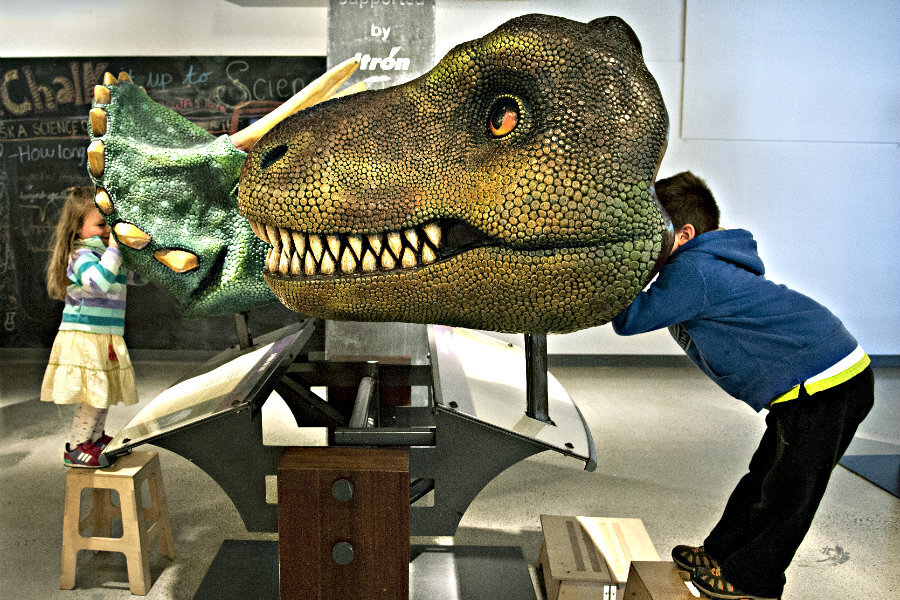What makes rare 'Tufts-Love' T. rex a 'must-see' dinosaur?
Loading...
Paleontologists have discovered a massive example of one of ancient history’s scariest dinosaurs in the famed Hell Creek formation in Montana: a humongous 2,500 pound Tyrannosaurus rex head that could be just the beginning of a massive find for Washington State’s Burke Museum.
A research team led by scientists from the museum and the University of Washington worked to unearth the 66.3 million year old T. rex head over the course of a month this summer. Most of the skeleton could still be in the ground, meaning that paleontologists involved in the excavation will have an exciting summer break next year.
"We think the Tufts-Love Rex is going to be an iconic specimen for the Burke Museum and the state of Washington, and will be a must-see for dinosaur researchers as well," paleontologist Gregory Wilson, a University of Washington professor who worked on the project, said in a press release.
Although T. rex fossil findings are rare, the Hell Creek Formation has proven to be a treasure trove of the giant dinosaurs' remains. Over the past several decades, 11 T. rex specimens have been found at Hell Creek, more than at any other site in the world. The first T. rex bones discovered in the Hell Creek Formation were found by fossil hunter Barnum Brown in 1902. One nearly complete T. rex skeleton, discovered in 1988, was sent to the Smithsonian in 2014.
The first hint of this most recent discovery was found by two Burke Museum volunteers, Jason Love and Luke Tufts, who found pieces of bone sticking out of a cliffside in the famous Hell Creek Formation in northern Montana. The specimen has been named in their honor.
"The combination of the skull features, the size of the bones, and the honeycomb-like appearance of the bones tell us this is a T. rex," said Dr. Wilson. "This was a very exciting moment for us."
While the first thing that researchers found were bone fragments and some fossilized vertebrae. After some excavation, team members also discovered the dinosaur’s pelvis, part of its jaw, and the skull. Paleontologists estimate that they have uncovered just 20 percent of the skeleton.
It took 45 people working for several weeks to completely excavate the dinosaur’s head, which was buried in 20 tons of rock. It was the characteristic shape of the skull and the "honeycomb-like" bones that confirmed team members' suspicions: They’d found a T. rex.
The now-excavated head, which weighs 2,500 pounds while wrapped in its protective plaster jacket and measures four feet long, is one of just over a dozen in existence, and only about two dozen T. rex fossils "at this level of completeness" have been found anywhere in the world.
While paleontologists have not yet unearthed the entire Tufts-Love T. rex, they can tell by the size of the skull that the dinosaur was 15 when it died, about middle-aged for a creature with a 25- to 30-year life span.
Researchers also know what caused the dino’s demise: Given its location at the bottom of a hill, below a rock layer that dates to the Cretaceous-Paleogene mass extinction, when T. rex went extinct, scientists can tell that the dinosaur lived right at the end of the Cretaceous period.
About 40 feet long, the Tufts-Love dino was the size of a city bus. While not the largest specimen ever unearthed, this dinosaur is about 85 percent of the size of the biggest T. rex ever found, making it very large indeed.
Burke Museum experts say that it could take more than a year to fully clean the skull and prepare it for viewing.








